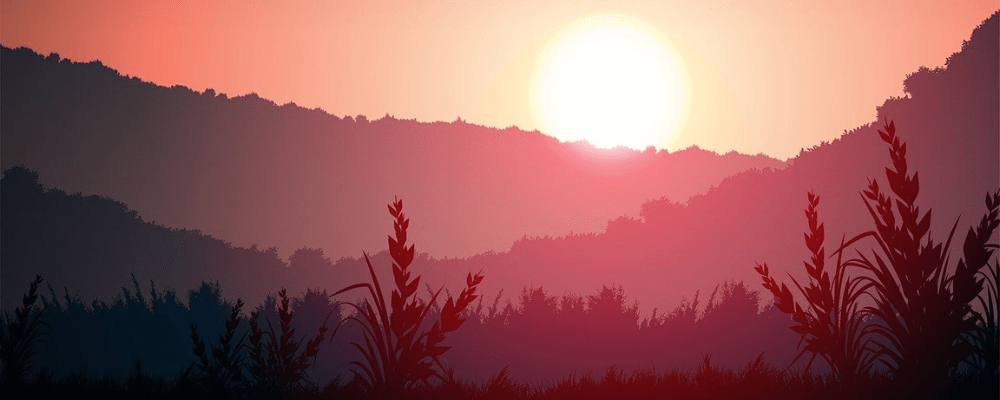Millets, a diverse group of small-seeded grasses, have a long history of cultivation spanning centuries and have been a staple in the diets of various communities worldwide. These hardy crops offer numerous advantages, such as their adaptability to diverse agro-climatic conditions and their exceptional nutritional content.
However, over the years, millets have experienced a decline in India for several reasons. The decline in millet consumption in India can be attributed to various factors:
- Emphasis on the Green Revolution: 1960s-70s Green Revolution prioritized high-yield rice and wheat, benefiting from government support and subsidies and establishing their competitive edge in food production.
- Shift in Dietary Preferences: As India experienced socioeconomic changes, dietary preferences shifted towards refined grains like rice and wheat. Consumers leaned towards more processed and convenient food options, leading to a decrease in the demand for millets.
- Limited Market Access and Promotion: The availability of millets in retail outlets was restricted, and there was a lack of awareness regarding their nutritional benefits. Inadequate marketing strategies contributed to the decline in consumer demand.
- Perception and Stigma: Millets were often associated with poverty and rural lifestyles, resulting in a negative perception among urban consumers. These perceptions influenced consumer choices and hindered the acceptance and integration of millets into mainstream diets.
- Lack of Research and Development: Insufficient investment in research, crop improvement, and value-added product development hindered the innovation and diversification of millet-based products.
- Farming Challenges: Millet cultivation faced various obstacles, including limited access to improved seeds, insufficient technical knowledge, and inadequate market infrastructure.
Despite the decline in millet cultivation, these ancient grains offer numerous benefits that make them a valuable addition to our diets and agricultural practices.
Benefits of Millets
Water savings
When we compare the water needs of rice and millets, a clear distinction emerges. Research suggests that while it takes an astonishing 5,000 liters of water to produce 1 kg rice, millets flourish with significantly lower water consumption, typically ranging from 650 to 1,200 liters.
Given these aspects, a notable transition from rice and wheat to millets in India could lead to remarkable advantages, particularly substantial water conservation. For example, even with a conservative projection of substituting just 10% of rice production with millets, it could potentially save around 545 trillion litres of water.
|
Water Savings Estimations
|
Daily average nutrition intake
India accounts for the second-highest number of diabetic patients, especially in urban areas, which is nearly 18% of the global count of diabetic patients. This is a visible health risk for the younger demographic. Millets are known to increase insulin sensitivity and lower the level of triglycerides and can act as a healthier substitute for the consumption of cereals like rice and wheat (See Table below).
| * Per 100g | ||||
| Carbs, g | Protein, g | Iron, mg | Fibre, g | |
| Rice | 78.2 | 6.8 | 0.6 | 0.2 |
| Whole Wheat Flour | 71.2 | 15.1 | 3.9 | 10.6 |
| Maida | 74.6 | 12.0 | 3.6 | 3 |
| Millets (Average) | 65.5 | 11.0 | 13 | 7 |
| Source: National Institute of Nutrition; US Department of Agriculture | ||||
|
On average, an Indian eats 6 kg of rice every month and 4.3 kgs wheat (National Sample Survey).So, a total daily nutrition intake for 200 grams of rice and 143 grams of wheat: Total Carbohydrates = 156.4 g (rice) + 101.896 g (wheat) ≈ 258.296 g Total Protein = 13.6 g (rice) + 15.73 g (wheat) ≈ 29.33 g Total Iron = 1.2 mg (rice) + 0.286 mg (wheat)≈ 1.486 mg Total Fiber = 0.4 g (rice) + 14.3 g (wheat) ≈ 14.7 g Now, total daily nutrition intake with millets replacing even 50% of rice and wheat in the diet: Total Carbohydrates = 78.2 g (rice) + 50.988 g (wheat) + 112.3075 g (millets) ≈ 241.4955 g Total Protein = 6.8 g (rice) + 7.865 g (wheat) + 22.295 g (millets) ≈ 36.96 g Total Iron = 0.6 mg (rice) + 0.143 mg (wheat) + 22.295 mg (millets) ≈ 22.5 mg Total Fiber = 0.2 g (rice) + 7.15 g (wheat) + 12.005 g (millets) ≈ 19.355 g |
The above workings indicate a 26% increase in daily protein intake, 15x increase in iron and 32% increase in fibre in addition to 7% decrease in carbs.
Reduction in chemical fertilizer
Millets, rain-fed for ages, need minimal fertilizers. Unlike major cereals, some millets like finger and pearl millet can partner with nitrogen-fixing bacteria, decreasing synthetic nitrogen fertilizer demand.
They have lower nutrient demands compared to other cereals and have evolved to thrive in resource-limited environments. Millets thrive with low nutrients, resist insects, need minimal fertilizer, and mature in 70-80 days, unlike rice and wheat taking over 100 days.
Low carbon footprint
Millets are eco-friendly due to its lesser dependency on outside resources, drought resistance, and smaller carbon footprint (around 3,218 kg CO2e/ha). In contrast, wheat and rice have higher footprints (about 3,968 and 3,401 kg CO2e/ha) as per various researches
| Millets and El Nino With the impending risk of El Nino, an increasing number of farmers may be incentivized to engage in millet farming. Millets possess remarkable adaptability to hot and arid conditions and can even thrive in temperatures exceeding 60 degrees Celsius. |
Revival of Millets
- Farmer-Centric Support and Training
State governments can provide targeted support to farmers interested in cultivating millets. This support can include financial incentives, access to quality seeds, training in modern millet farming techniques, and knowledge sharing platforms. Additionally, establishing millet farming cooperatives or farmer groups can help foster collaboration and exchange of best practices among farmers.
- Investing in Research and Development to improve productivity
The primary hindrance in maintaining foodgrain production while expanding the cultivation of millets is the difference in yields of millets and cereals like wheat and rice. Millet crops have relatively lower yields in comparison. To address food security concerns due to this, it is imperative to reduce this productivity gap. This requires focussed investment in research and development on millet crops, to create improved varieties with higher yields.
| Crop | Yield (Kg/Hectare) |
| Rice | 2717 |
| Wheat | 3521 |
| Jowar | 1099 |
| Bajra | 1420 |
| Ragi | 1724 |
| Source: Directorate of Economics and Statistics, Ministry of Agriculture | |
Case for Millets in India:
| FY 21 | Total Area (‘000 Hectares) |
Yield (Kg/Hectare) |
Production (million Tonnes) |
Total Demand (million tonnes) |
Ecess production (million Tonnes) |
Area used by excess Production (‘000 Hectare) |
| Rice | 45,769 | 2,717 | 124 | 110 | 14 | 5,288 |
| Wheat | 31,125 | 3,521 | 110 | 98 | 12 | 3,291 |
Source: Directorate of Economics and Statistics, Ministry of Agriculture; NITI Ayog
The area used by excess production is roughly 11 % of the total area under wheat and rice. The workings indicate that at least 5-10% of the total area under wheat and rice can be used for millet production sustainably and without risking the food security of the country.
Balancing the resources
The relation between irrigation practices and cultivation significantly influences crop yields. The implementation of policies that promote millets may result in heightened competition for water resources with rice and paddy, especially when both crops become equally profitable. Therefore, it becomes crucial to identify regions where this trade-off is minimal as it will be a key factor in ensuring sustainable agricultural practices.
Sustainable Consumption Campaigns
Encouraging consumers to choose millet-based products as a sustainable and healthier option can create a demand-driven market. Collaborating with retailers, grocery stores, and e-commerce platforms to promote millet products can lead to increased consumption.
Millets in Public Nutrition Programs
Incorporating millets into government-sponsored nutrition programs, such as school meal schemes and mid-day meals, can significantly boost their consumption. This not only increases the demand for millets but also creates a future generation of consumers who are aware of their nutritional value.
Empowering marginalized farmers
Governments and NGOs can work together to create awareness campaigns that highlight the economic benefits of millet cultivation. Initiatives such as the Odisha Millets Mission have empowered women in tribal areas to revive millet farming and exchange traditional seeds, leading to the revival of multiple millet varieties.
In conclusion, millets present a promising solution to address some of the pressing challenges we face today, from climate change and water scarcity to nutritional deficiencies and sustainable agriculture. As we look ahead, embracing millets is not just a return to our agricultural heritage but a bold step towards a more sustainable and nutritious future where the benefits of millets are cherished and integrated into mainstream diets worldwide.
The post Millets: Rediscovering ancient grains for a sustainable and nutritious future appeared first on Avalon Consulting.
“Avalon Consulting was set up in 1989 and has grown to become one of Asia’s top-ranked consulting firms; the only Indian firm to achieve this recognition.
Please visit the firm link to site



